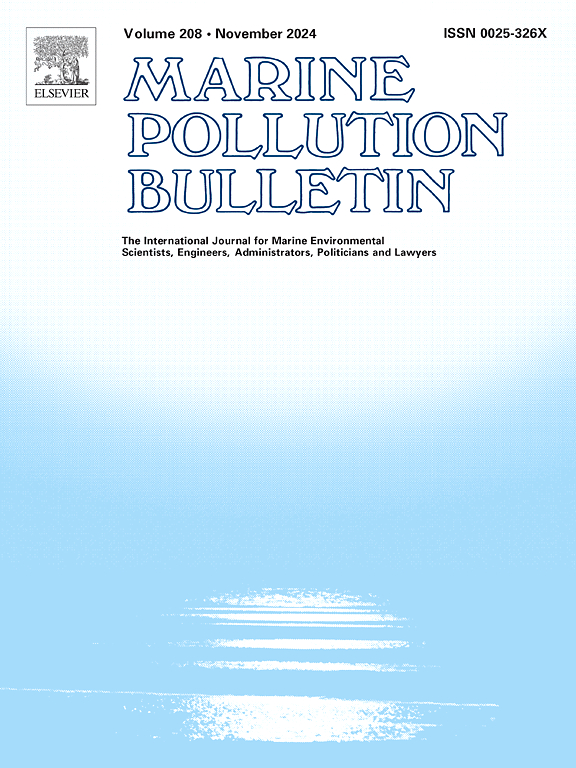Disentangling metal diffusion from a highly industrial harbor and its bioaccumulation in different zooplankton groups
IF 5.3
3区 环境科学与生态学
Q1 ENVIRONMENTAL SCIENCES
引用次数: 0
Abstract
Metal pollution in harbors has long threatened coastal ecosystems. However, elucidating their bioaccumulation and diffusion impacts is challenging due to complex marine communities—with zooplankton as an indicator. Metals in seawater, suspended particulate matter, and isolated zooplankton groups were analyzed using inductively coupled plasma mass spectrometry. As hypothesized, metals were significantly bioaccumulated by zooplankton (log BCF > 3.7). Seawater metal distribution was homogenous, while suspended particulate matter (SPM) showed wider variations, both having high Metal Pollution Index (MPI) levels along harbor entrances. Bioaccumulation in zooplankton groups varied significantly, with Fe, Cu, Zn, and Cd being the most bioaccumulative. The abundance and dominance of copepods drive metal accumulation in bulk zooplankton communities, with decreasing patterns towards the sea. This highlights the impact of harbor activities on metal diffusion and the potential long-range transport of pollutants, which is crucial for developing ecological monitoring — highlighting the role of dominant zooplankton groups in driving metal distribution.

求助全文
约1分钟内获得全文
求助全文
来源期刊

Marine pollution bulletin
环境科学-海洋与淡水生物学
CiteScore
10.20
自引率
15.50%
发文量
1077
审稿时长
68 days
期刊介绍:
Marine Pollution Bulletin is concerned with the rational use of maritime and marine resources in estuaries, the seas and oceans, as well as with documenting marine pollution and introducing new forms of measurement and analysis. A wide range of topics are discussed as news, comment, reviews and research reports, not only on effluent disposal and pollution control, but also on the management, economic aspects and protection of the marine environment in general.
 求助内容:
求助内容: 应助结果提醒方式:
应助结果提醒方式:


